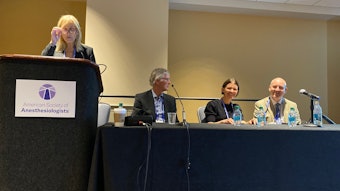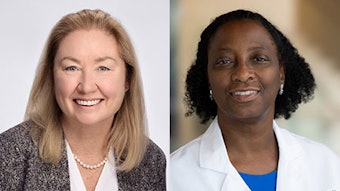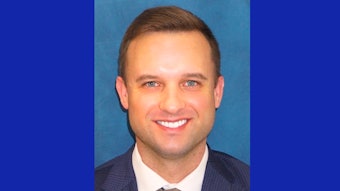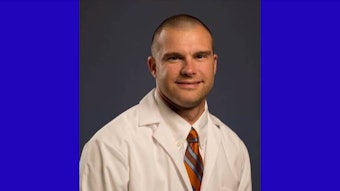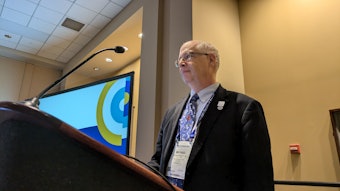Keeping an eye on the situation
Innovative methods of monitoring patients and, in some cases, doctors.
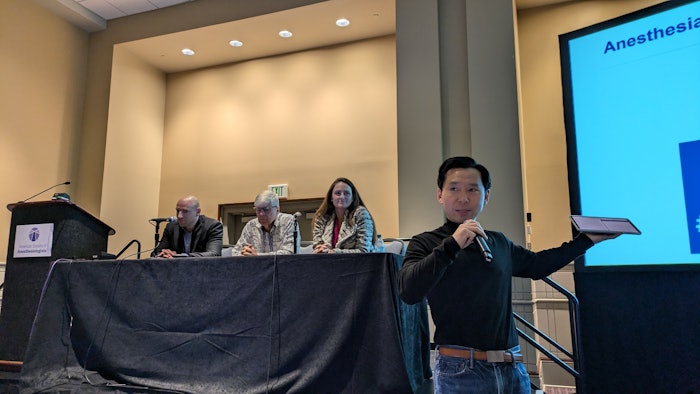
Apple’s Steve Jobs may be gone, but his spirit was alive and well at ANESTHESIOLOGY 2024 in Philadelphia.
Clad in Jobs’ signature black mock turtleneck and blue jeans, moderator Irving Ye, MD, MBA, FASA, walked attendees through the past, present, and future of monitoring devices as part of the 2024 session, “Anesthesia X: Hot Innovations in Interoperative Monitoring Devices.”
“The X for me represents innovation. It represents the unknown,” said Dr. Ye, who is Vice President of Clinical Transformation at NorthStar Anesthesia in Frisco, Texas. “It is an unscripted letter, word, or phrase, and it’s about possibility.”
Steven Shafer, MD, FASA, Emeritus Professor of Anesthesiology at Stanford University, shared a possibility of what might have been with his overview of SEDASYS, a closed-loop drug delivery system developed by Johnson & Johnson and Stanford, and for which he served as a consultant for 12 years. He said the project began when gastrointestinal doctors started to experiment with propofol for procedures like colonoscopies.
“Our goal was anesthesiologists’ standards from the OR to a device that could deliver propofol safely,” he said.
The result was SEDASYS, a system that delivered routine patient monitoring and was attached during preop and not removed until patient discharge. It used an automated responsiveness monitor that the patient held in their hand, which vibrated every 30 seconds and told the patient to squeeze their hand. If they didn’t squeeze, the propofol dosing was lowered; after a minute of unresponsiveness, it was stopped altogether.
Dr. Shafer said SEDASYS was a success in terms of patient care, but it was ultimately withdrawn from the market.
“It was withdrawn in 2014, not because it failed. It actually worked,” he said. “But it was because the market had changed. By 2014, GI nurses or endoscopists were no longer doing these cases. It was anesthesiologists. We do a better job. Nobody dies if an anesthesiologist is in the room.”
Moving to present-day Germany, Bernd Saugel, MD, Professor of Anesthesiology and Vice Chair of the Department of Anesthesiology in the Center of Anesthesiology and Intensive Care Medicine at the University Medical Center Hamburg-Eppendorf, shared how his health care system is using a noninvasive pulse wave analysis tool with an integrated infrared light source. The device uses an inflatable finger cuff to measure blood volume in the finger arteries and adapt the amount of pressure put on the finger accordingly.
Although the device is quite effective, Dr. Saugel said it is not yet in widespread use for several reasons.
“Today, we still mainly use invasive and minimally invasive sensors,” he said. “Those noninvasive sensors are available, but they are rarely used because [as a community], we do not really agree on the indication [for the device]. Some still want to replace the interior catheter, which, in my opinion, is not the right approach. I think those systems should replace intermittent measurements. And the second reason they are not being implemented is that they are still very expensive.”
Although much new technology is aimed at monitoring the patient, a new system being developed at Stanford University is aimed at monitoring the doctor. Ashley Peterson, MD, MPH, Clinical Assistant Professor of Anesthesiology, Perioperative and Pain Medicine at Stanford, said the so-called “Black Box of the OR” is designed to be a learning tool in much the same way as a sports team might review tape after a game.
“My 8-year-old’s soccer team gets together on Saturdays, eats popcorn, chews gummy bears, and watches their tapes,” she said. “There’s a life on the line every time we come to a critical event response scenario, so why would we, in the OR, be different? Why don’t we watch our tapes?”
The “black box” uses ambient surveillance data integration exclusively for education, quality control, and patient safety purposes, taking great pains to blur the videos and protect the privacy of patients and physicians alike, Dr. Peterson said.
“This ambient surveillance technology is allowing us to observe the process without actually standing in the room and holding a clipboard,” she said.
